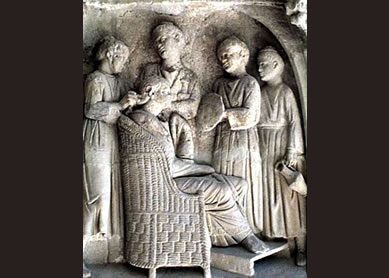Frequently Paul was in prison (
What was prison like for Paul?
The accounts of Paul’s imprisonment in Acts and his letters are somewhat out of alignment. Even though Acts places Paul’s imprisonment at the center of the narrative (
How did Paul’s location affect his writing?
Writing in prison could be dangerous, since information could be used against the author. Spies, prison guards, or coprisoners carefully monitored the defendant. Therefore, writers tried to conceal their message through opaque content, pseudonyms, allegories, or riddling speech. Arguably, it is not by accident that Paul is vague when discussing things such as Onesimus’s status, and his own relationships to Philemon, Aphia, and Archippus remain debated in modern scholarship. It is not clear what Paul means in Philippians by “progress of the gospel” (
Prayers of the Philippians fill him with hope and, most importantly, joy. Joy is the most prominent code word here. It is a seemingly neutral word that conveys some extra message. Since full understanding requires a shared code and context, our understanding remains limited. Yet, theological traditions might give some clues: Joy is God’s gift (
Bibliography
- Wansink, Craig S. Chained in Christ: The Experience and Rhetoric of Paul’s Imprisonments. JSNTSup 130. Sheffield: Sheffield Academic, 1996.
- Standhartinger, Angela. “Greetings from Prison and Greetings from Caesar’s House (Philippians 4.22): A Reconsideration of an Enigmatic Greek Expression in the Light of the Context and Setting of Philippians.” JSNT 43 (2021): 468–84.
- Standhartinger, Angela. “Letter from Prison as Hidden Transcript: What It Tells Us about the People at Philippi.” Pages 107–40 in The People beside Paul: The Philippian Assembly and History from Below. Edited by Joseph A. Marchal. Atlanta: SBL Press, 2015.




